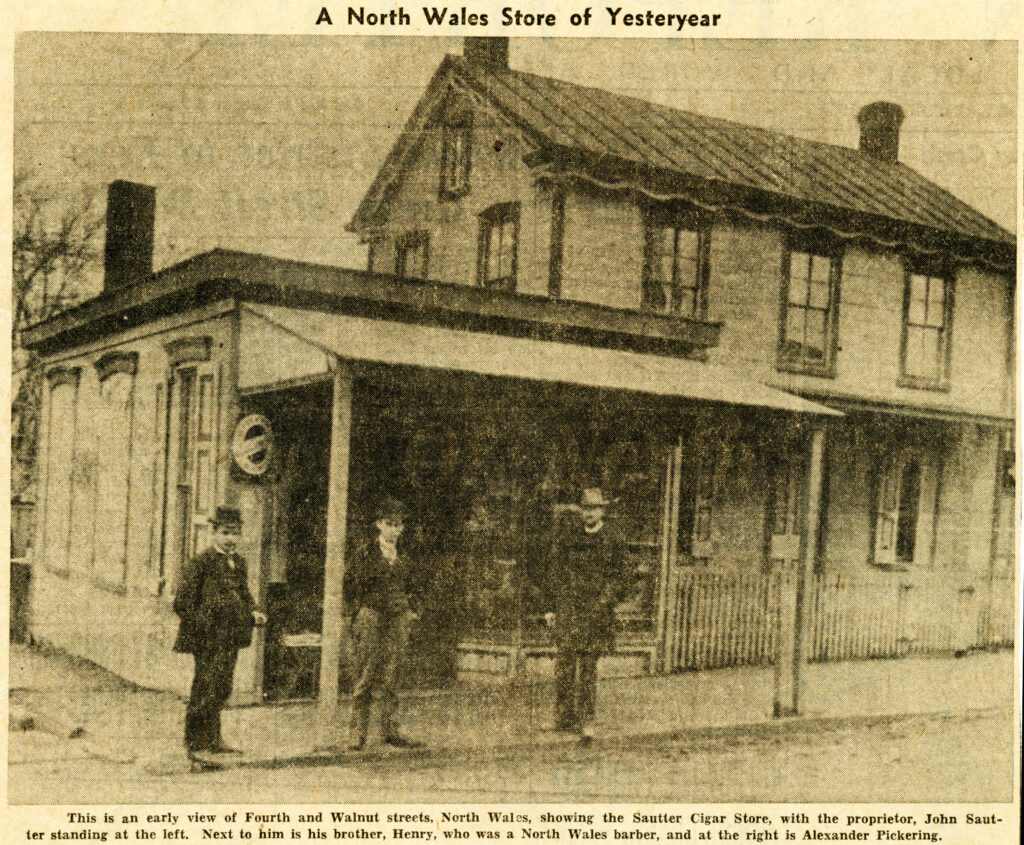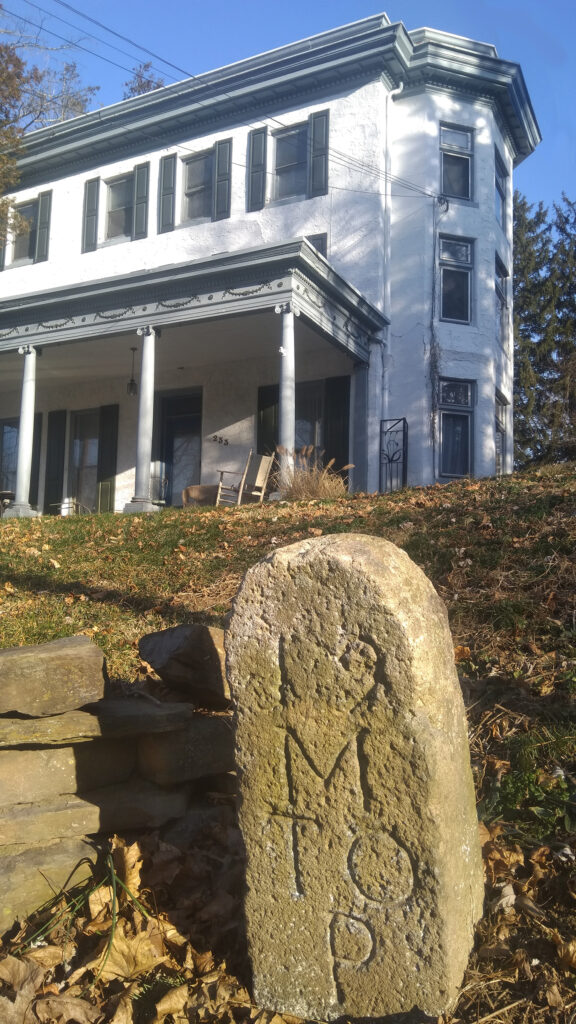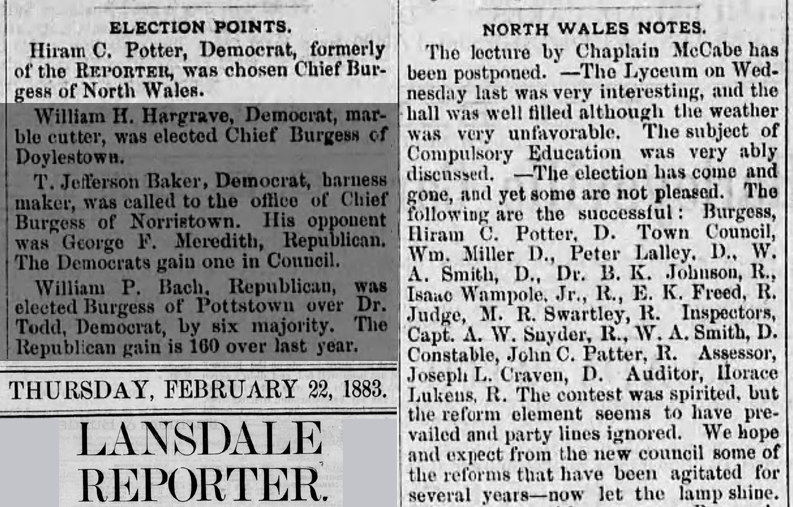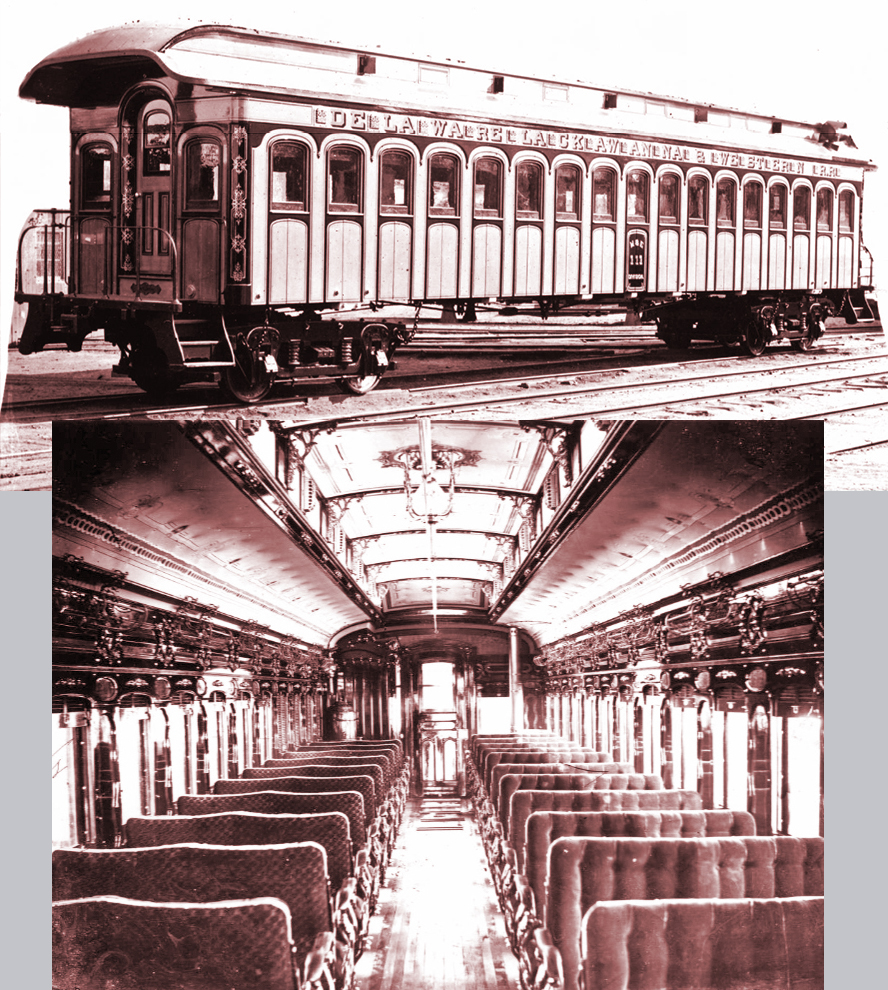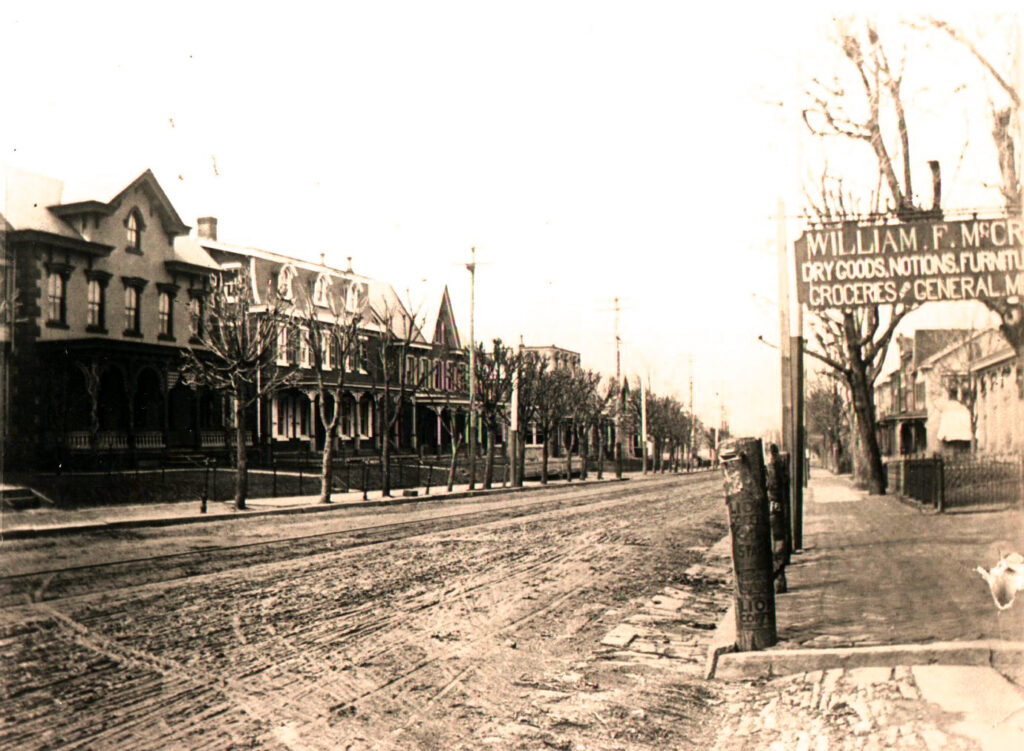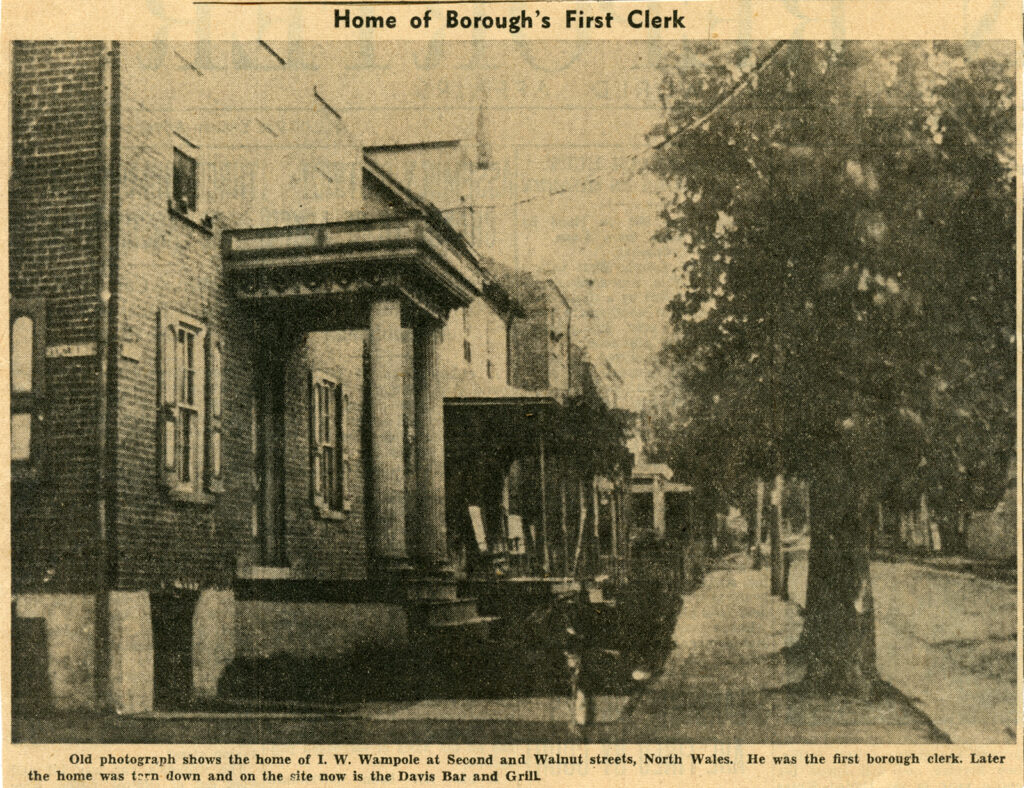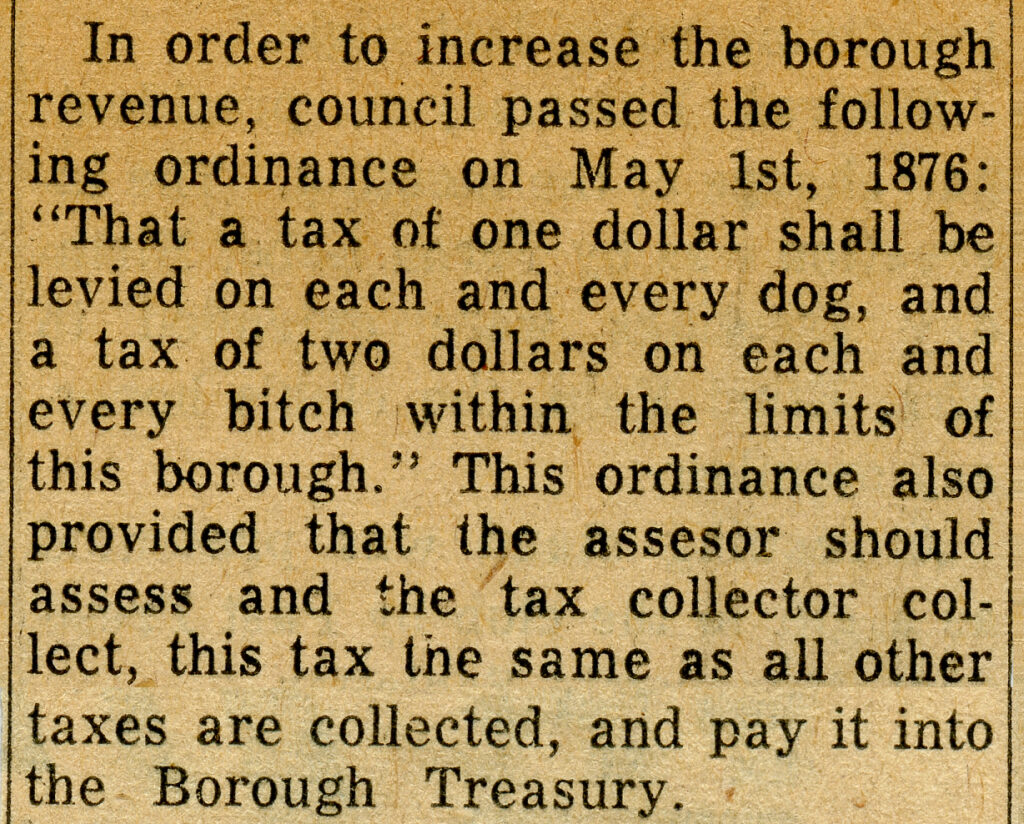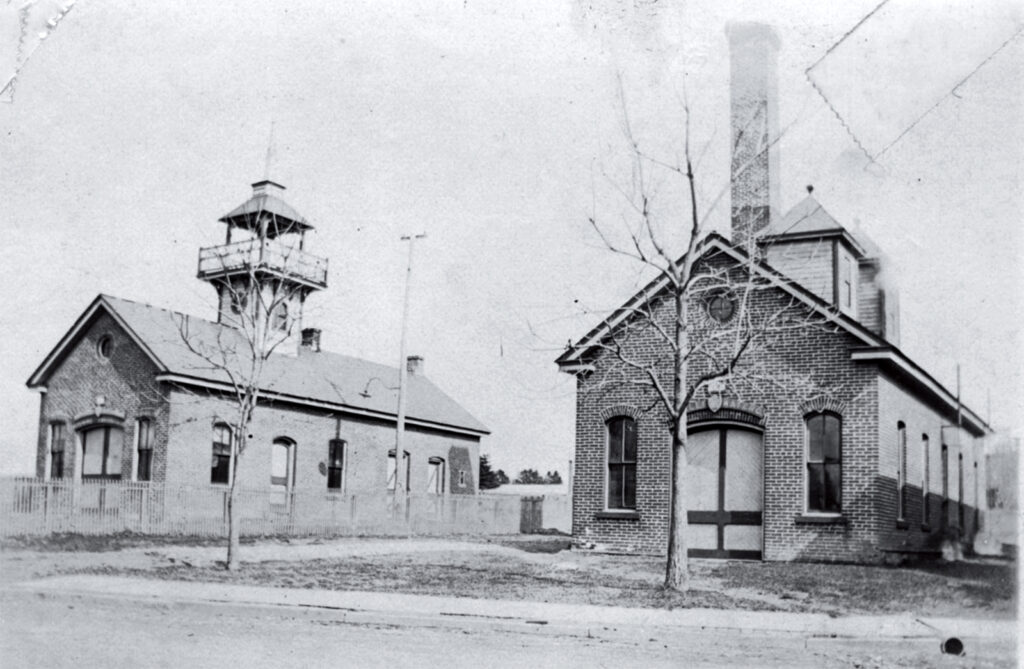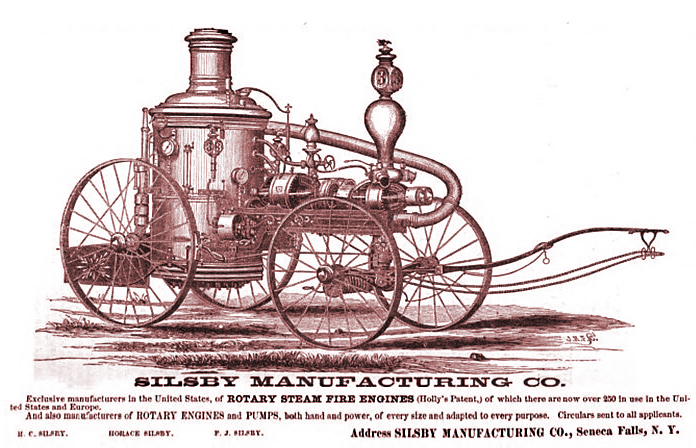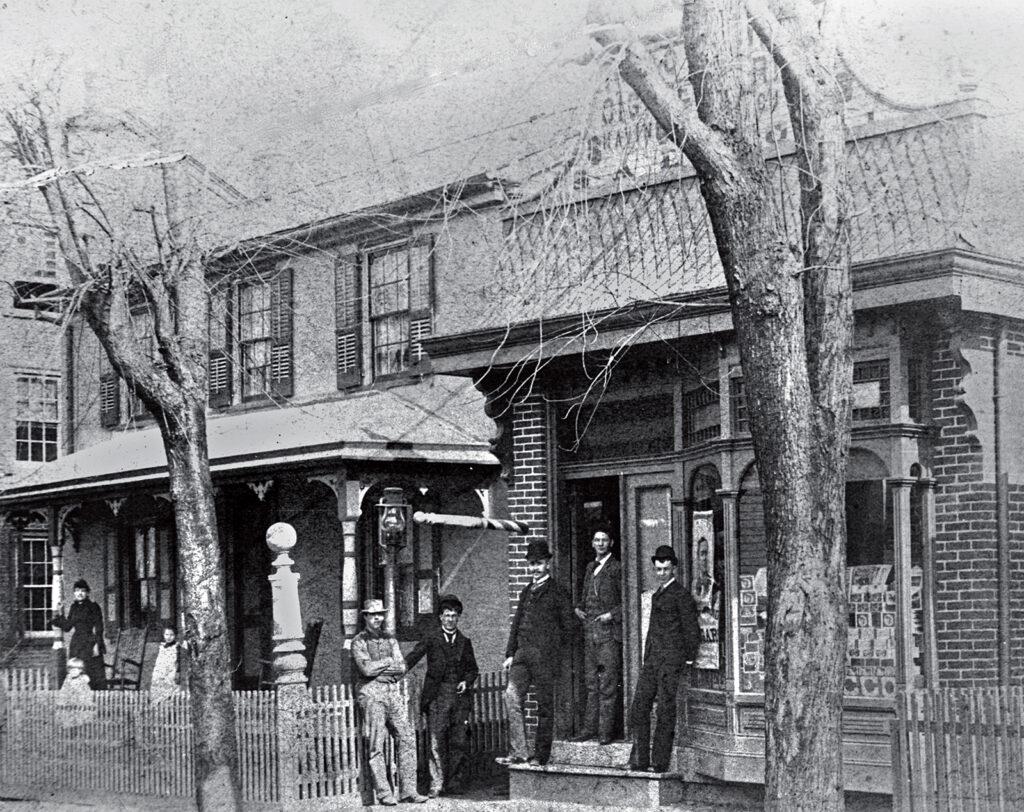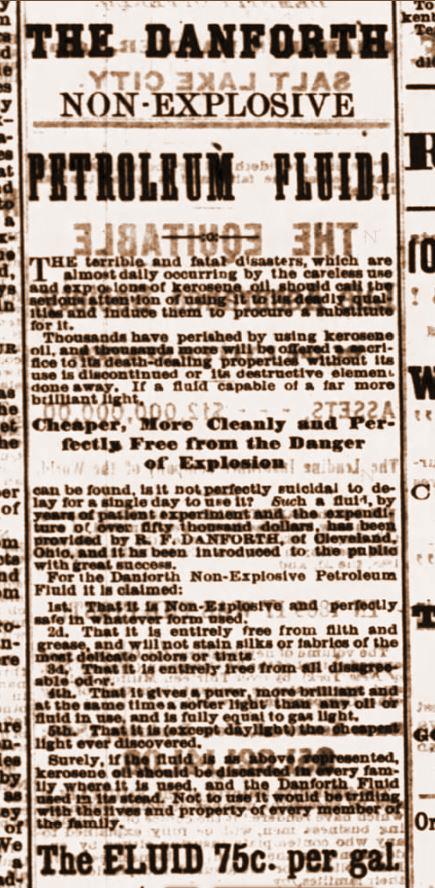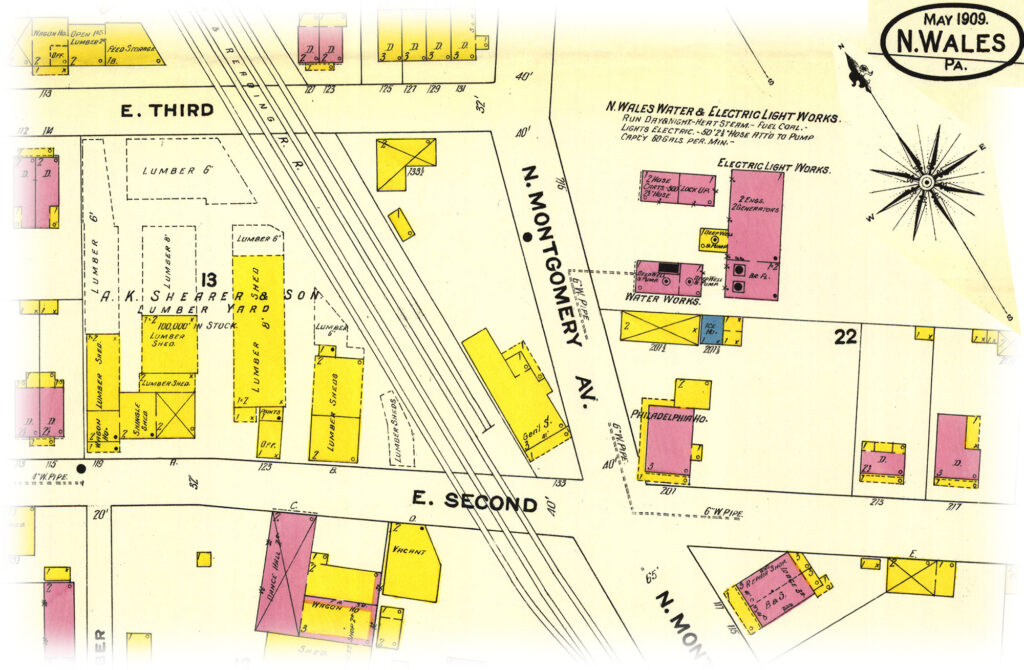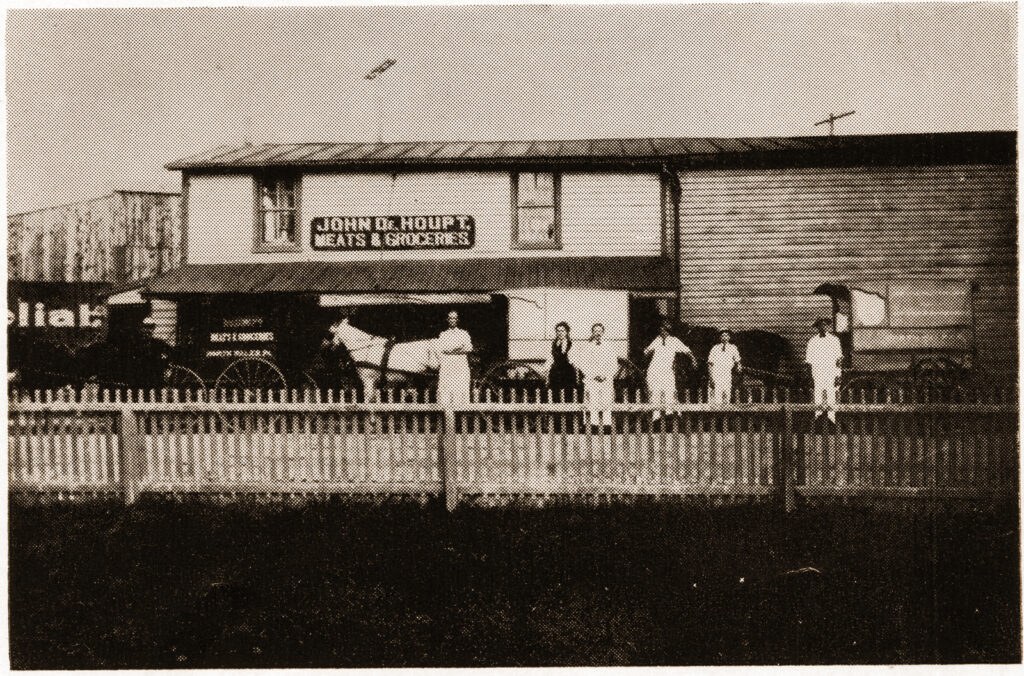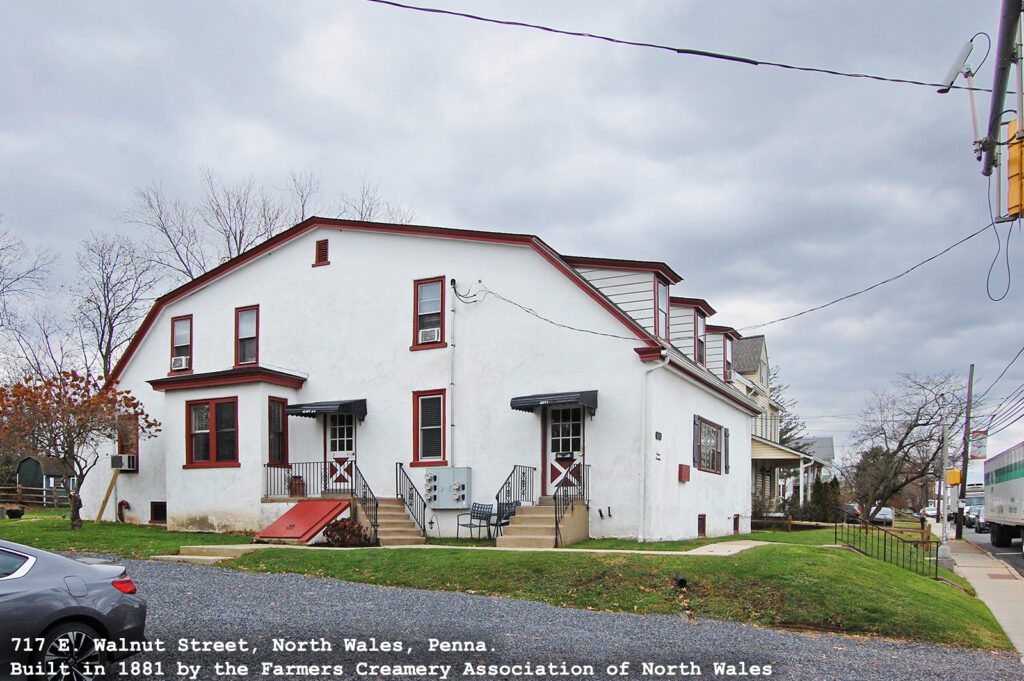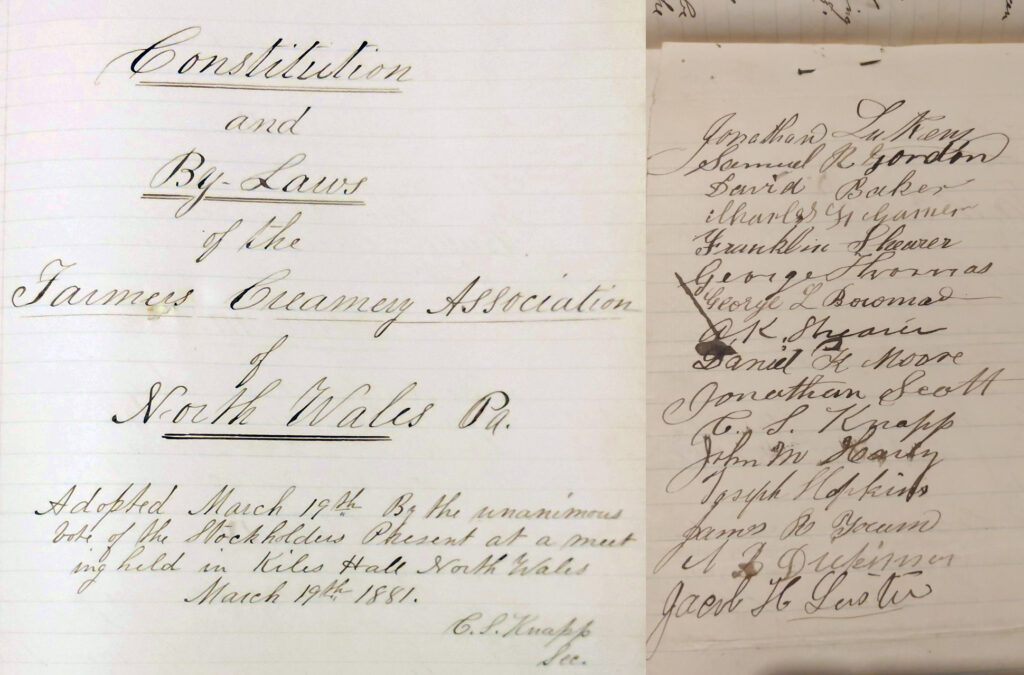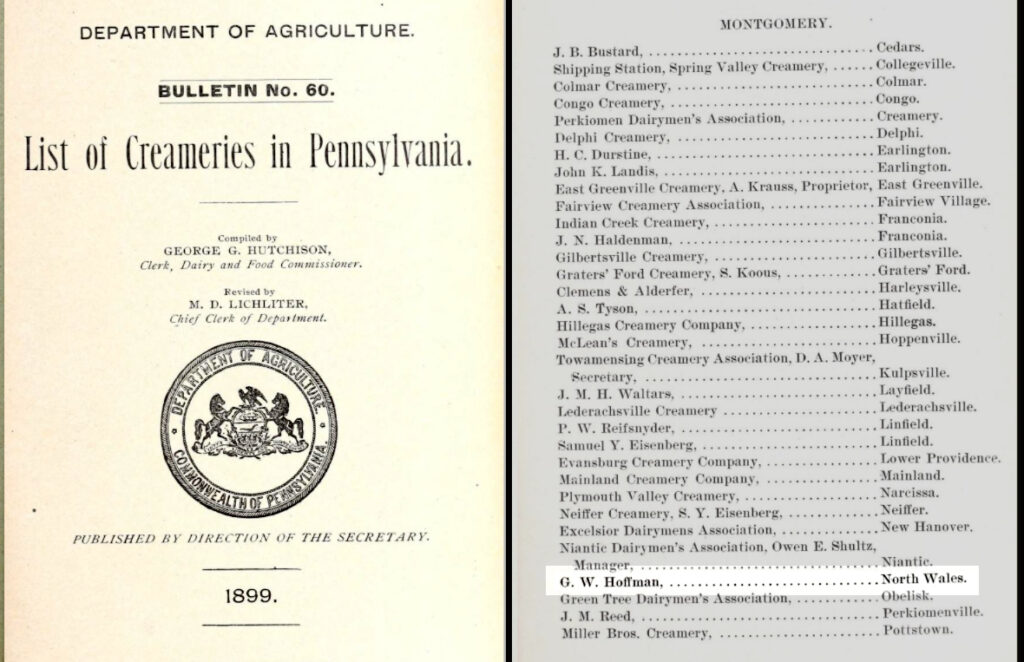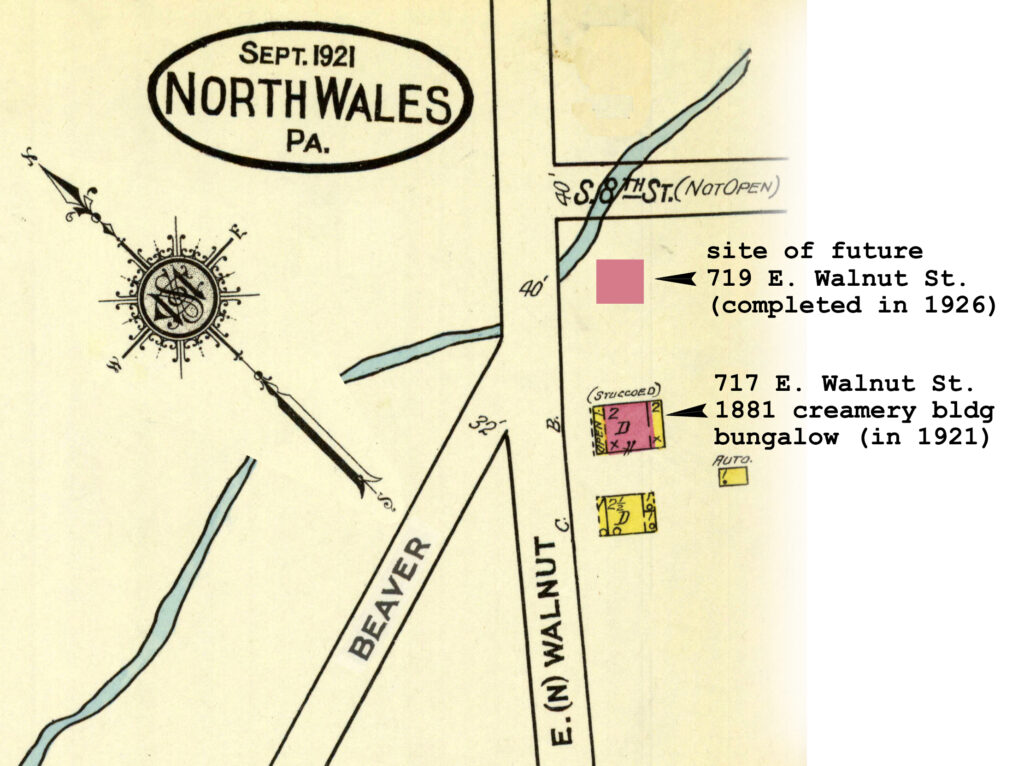At a special meeting of North Wales Borough Council, held on February 17, 1885, the propriety of disposing of part of the lot upon which the lockup (borough jail) was erected was considered. This lot was located on the northeast corner of Third and School Streets.
An offer of ten dollars was made for part of the lot fronting 51 feet on School Street, adjoining Mrs. Stong’s property on the northeast side. The offer was accepted and the president was authorized to dispose of the lot in the rear of Mrs. Stong’s property to her at five dollars.
The borough, having no convenient or suitable place in which to keep burning fluid (for street lanterns), ladders, etc, at the meeting of April 23, 1885, “it was on motion of Mr. Moyer agreed that the Committee on Street Lamps have a building erected in the rear of the lockup for that purpose, the same to be six by eight feet. Seven feet (height) to square of frame, shed roof of boards and sides and roof to be stripped.” This building was completed by June 1, 1885.
That a great number of hogs were kept within the borough is evidenced by the complaints that were received by council at almost every meeting. Council acted quickly on the complaints and ordered the nuisance abated as soon as it arose.

After the General Election held on the 16th of February, 1886, council reorganized on March 1, and we quote from the minutes of that date: “After the business of the retiring council, Jonathan Scott arose and extended his hand to the retiring President Isaac Wampole, Jr., and congratulated him on the faithful and impartial manner in which he discharged his duties as president and member of council, and that he had the pleasure of being in council with him nine years ago and that he on more than one occasion had been specially benefitted by his just and wise counsel.
“Whereupon the president replied, saying he did not know that he had been of special benefit to anyone, but that he well remembered being in council at the time alluded to by Mr. Scott, that he always tried to do his duty to the best of his knowledge and understanding, that he has been a member of council for the last ten years less one month, and that the first seven years thereof spent in peace and their deliberations were harmonious and pleasant, but the last two years and eleven months have been very dissatisfactory to himself, as well as to others, and asked forgiveness if he wronged anyone, and that he forgave those whom he has just cause to claim have wronged him, and hoped that the ill will and hatred that has existed may die out with the adjournment of the present council, and to the new and incoming council said that he did hope and trust that all their actions and deliberations may be pleasant and founded on the principle of love and justice.”
At this same meeting I. W. Wampole, clerk, was defeated on the fourteenth ballot by Isaac G. Freed. Mr. Wampole had served in the capacity of clerk for a period of fifteen years.
The meeting place of borough council was again changed on April 5, 1886 to the office of the clerk, Mr. Freed.
The matter of a water supply for fire protection had never been considered seriously by council until January 25, 1887, when at a special meeting of council, “Jonathan Scott, president, stated the business of the meeting was to consider a proposition of the North Wales Water Company to put in water hydrants for the use of the borough in case of fire, etc.” The following proposition was then read: “The North Wales Water Company agrees to erect 20 fire hydrants in the different streets of the borough for fire protection, and to have an ordinary supply of water in their tank at all times; but don’t agree to keep up fire under the boiler night and day, but will keep a good supply of dry kindling wood on hand and when the fire is drawn out, the kindling to be put under the boiler ready to fire up at short notice. The engineer to be instructed that in case of a fire in the borough, he is to get up steam and start the pump without delay so as to give the best supply of water to the hydrants as possible, for the sum of $150 per annum, or $7.50 per hydrant per annum.” This proposition was accepted by the council.
Up until this time there was no means of crossing the railroad on Pennsylvania Avenue at Washington Avenue, and on June 6, 1887, there appears in the minutes the following: “A petition signed by many citizens asking for a bridge across the railroad to connect Washington Avenue with Pennsylvania Avenue which are now separated by the North Penn Railroad which is in a deep cut at this place. After the reading of the petition, the propriety and impropriety of building such a bridge was fully discussed, and when much time was thus consumed a motion was made and seconded that the chair appoint a committee to view the site and ascertain the expense to build such a bridge and report to the council at the next monthly meeting. The motion was agreed to and the president appointed Frank Anderman, W. H. Barger, H. B. Mull, and John Choyce as a committee.
This post is sourced from a column entitled Early North Wales: Its History and Its People penned by long-time North Wales resident historian Leon T. Lewis. The article appeared in its original form in the October 13, 1959 issue of the North Penn Reporter

